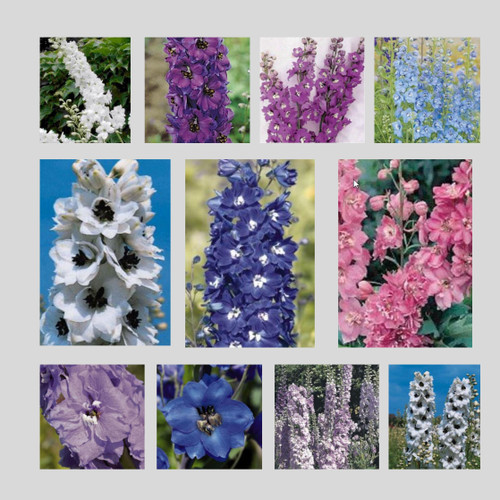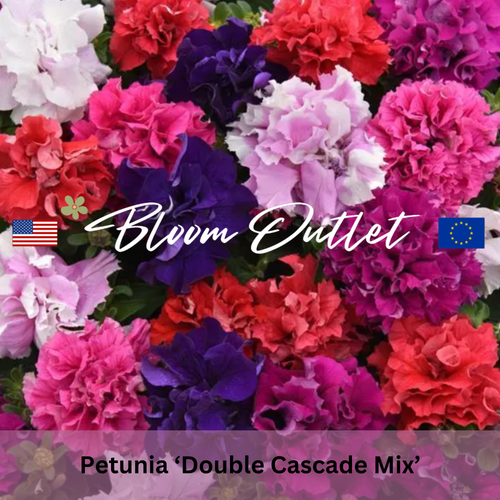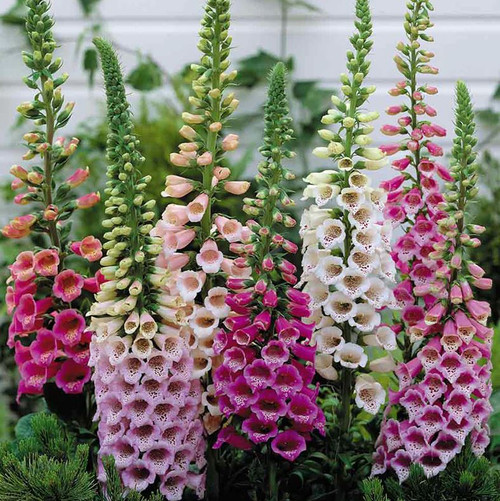Dahlia is a group of bushy, often tuberous rooted, perennials from mountainous areas of Central America, grown for their blooms in a variety of forms, colors and patterns. Leaves which are about 8-20 in. (20-50cm) long, proportionate in size to the blooms, are mid to dark green. Almost all currently grown cultivars have strong, straight stems and attractive foliage. Dahlias flower from midsummer to first frost when many other plants are past their best. All are excellent for garden display, especially the giant flowered dahlias which are suitable for exhibition. Bedding dahlias are low-growing and may be raised from seed and treated as annuals.
USES: Cut flowers, Beds, Mixed or Herbaceous border, Mass plantings, Borders, Containers, Window boxes, Cottage gardens, Houseplants, Accent, Bee & Butterfly gardens, Hummingbird gardens
Botanical Name: Dahlia variabilis ‘Dandy Improved Mix’
Common Name: Bedding Dahlia, Collarette-Dahlie
Type: Annual
Flower Color: Collarette dahlias in a mix of white, purple, violet, white/purple, deep red/white, yellow/red, orange/yellow blooms
Flowering Time: May to October
Plant Height: 17 in. (45cm)
Plant Width: 17 in. (45cm)
Light Requirements: Full sun
Water Requirements:
Soil Requirements: Humus rich, well drained soil
USDA Zone: 9-11 (Elsewhere, lift plants for the winter preferably when the foliage has been nipped by the first frost in mid autumn, cut back stems to 6in. (15cm) and lift the tubers. Gently brush off the soil, and leave upside down to dry naturally. Dust with fungicide, then pack in boxes of vermiculite or dry sand, and store over winter in a well ventilated, frost-free place. Check periodically for fungal infection, pare out any damaged tissue, and treat again with fungicide before returning to storage.
AHS Heat Zone: 12-1
Sowing Instructions (Cliff Notes Version): Sow seed in early spring, in warmth; harden off, and plant out when all danger of frost has passed.
Click here for Planting Instructions










